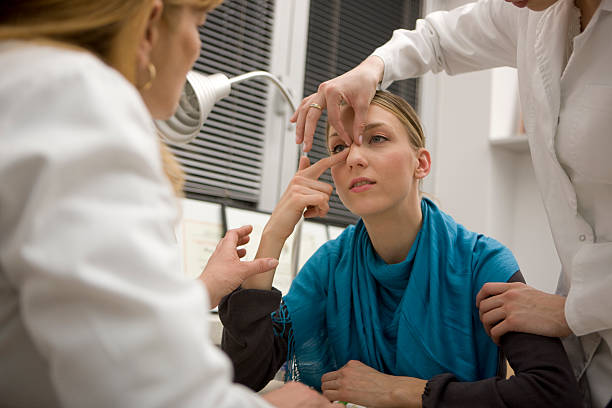Rhinoplasty, often referred to as a “nose job,” is one of the most sought-after cosmetic procedures worldwide. It involves reshaping or resizing the nose to improve facial harmony, correct deformities, or enhance breathing functionality. When considering Rhinoplasty in Abu Dhabi, or anywhere else, many patients wonder about the longevity and permanence of the results they can expect. This article explores whether rhinoplasty is a permanent solution, what factors influence its durability, and what patients should consider when planning for this transformative procedure.
Understanding Rhinoplasty: What Does It Entail?
The Basics of Rhinoplasty
Rhinoplasty is a surgical intervention designed to modify the nose’s structure. It can address various aesthetic and functional concerns, including nasal hump removal, tip refinement, nostril reshaping, and correction of nasal asymmetry. The procedure involves the removal, addition, or repositioning of nasal tissues—cartilage, bone, and skin—to achieve the desired outcome.
Types of Rhinoplasty Procedures
There are primarily two types of rhinoplasty:
- Open Rhinoplasty: Involves a small incision across the columella (the tissue between the nostrils), allowing for greater visibility and precise reshaping.
- Closed Rhinoplasty: Incisions are made inside the nostrils, resulting in no visible scarring and a quicker recovery.
Both techniques aim for long-lasting results, but the choice depends on individual goals and nasal anatomy.
Is Rhinoplasty Surgery Permanent? An Overview
The Nature of Surgical Outcomes
Generally, rhinoplasty results are considered permanent because the structural changes made during surgery are intended to last indefinitely. The reshaped bones and cartilage do not typically revert to their original form. However, several factors can influence the long-term stability of the results, including natural aging processes, environmental influences, and individual healing responses.
How the Body Changes Over Time
While the structural modifications are stable, the nose can undergo subtle changes over time due to:
- Aging: Loss of skin elasticity, cartilage strength, and bone density can alter nasal appearance.
- Weight fluctuations: Significant weight changes may affect nasal tissue and skin tightness.
- External trauma: Injury or impact can modify the nasal structure post-surgery.
Despite these factors, the core alterations from rhinoplasty usually remain intact, making it a long-lasting solution.
Factors That Influence the Permanence of Rhinoplasty Results
Healing and Postoperative Care
Proper healing is crucial to maintaining results. Adherence to postoperative instructions, such as avoiding trauma, refraining from excessive facial movements, and protecting the nose from injury, helps ensure the longevity of the surgical outcome.
Surgical Technique and Precision
The skill and experience of the surgeon play a vital role. Precise adjustments that respect the nasal anatomy can lead to more durable results. Overcorrection or under-correction can affect long-term satisfaction and stability.
Patient’s Age and Skin Quality
Younger patients typically experience more resilient skin and cartilage, which can result in more stable long-term results. Conversely, aging skin may sag or lose elasticity, subtly altering the nasal shape over time.
Lifestyle and Environmental Factors
Sun exposure, smoking, and environmental pollutants can influence skin health and aging, impacting the nose’s appearance over the years.
Common Myths About Rhinoplasty Permanence
Myths Debunked
Some misconceptions suggest that rhinoplasty results are temporary or will inevitably revert. In reality, once healing is complete, the structural changes are permanent, although minor aesthetic shifts can occur due to aging or external factors.
The Role of Revision Surgery
In cases where the initial rhinoplasty does not meet the patient’s expectations or structural changes occur over time, revision rhinoplasty can address these concerns, further enhancing the permanence of the results.
Long-Term Expectations and Maintenance
Expected Longevity
Most patients enjoy long-term or permanent results from rhinoplasty. The changes made during surgery are designed to be enduring, with the nose maintaining its new shape for decades in many cases.
When to Consider Touch-Ups
Although results are generally stable, some individuals opt for minor revisions years after their initial procedure to refine or adjust their appearance, especially if aging or external factors have influenced their nasal features.
Importance of Realistic Goals
Understanding that aging and environmental factors can subtly influence nasal appearance helps set realistic expectations. Maintaining overall skin health and protecting the nose from trauma can prolong the aesthetic benefits of rhinoplasty.
Frequently Asked Questions (FAQs)
1. Can rhinoplasty results change over time?
Yes, while the structural changes are permanent, aging, environmental factors, and external trauma can cause subtle shifts in nasal appearance over the years.
2. How long do rhinoplasty results last?
Most patients enjoy long-term or permanent results, with the initial changes remaining stable for many years, often a lifetime.
3. Is revision rhinoplasty common?
Revisions are sometimes performed to refine results, address asymmetries, or correct aging effects. They can help sustain or improve long-term outcomes.
4. What factors can affect the permanence of rhinoplasty?
Healing process, surgical technique, skin quality, lifestyle choices, and external trauma are key factors influencing the long-term stability of rhinoplasty results.
Final Thoughts
In summary, Rhinoplasty Abu Dhabi or elsewhere is largely considered a permanent surgical procedure. The structural modifications made during surgery typically do not revert, providing long-lasting results. However, natural aging processes, lifestyle choices, and external influences can cause subtle changes over time, which might be addressed with minor touch-up procedures if desired.
Ultimately, success and longevity depend on a combination of surgical expertise, patient care, and individual biology. Consulting with a qualified and experienced surgeon can help ensure that the results align with your aesthetic goals and expectations for the future.
